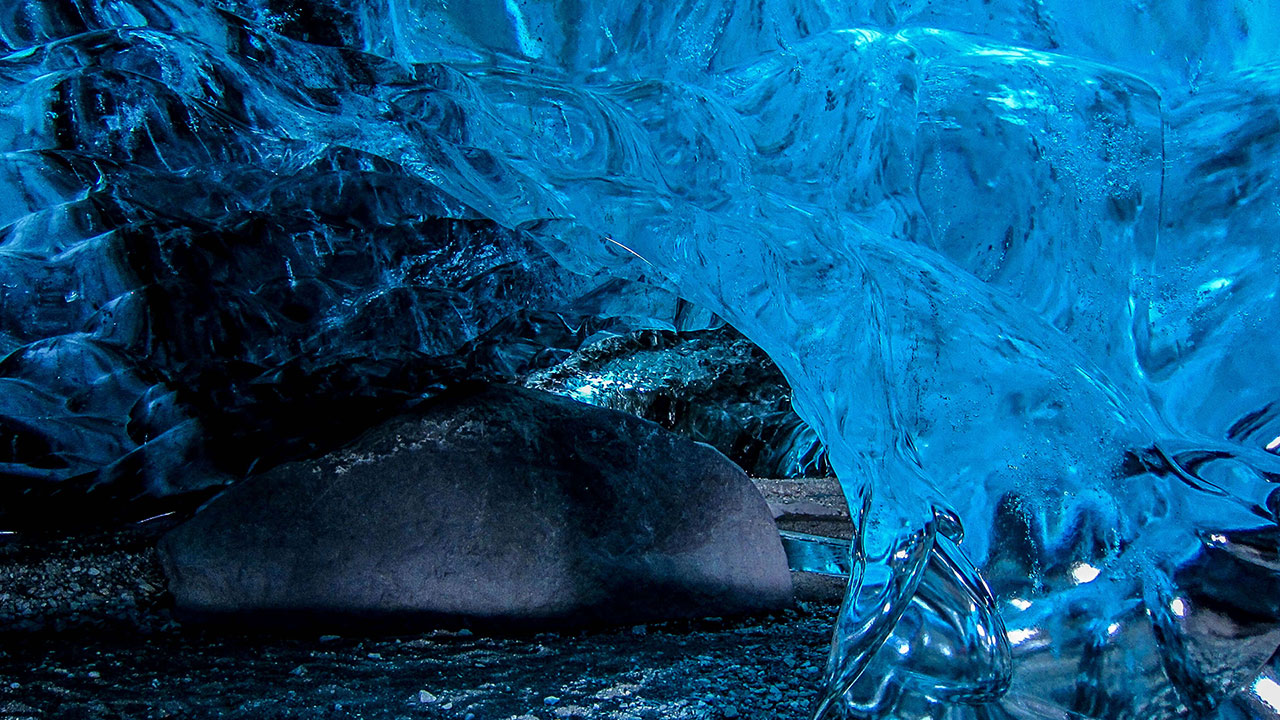Ever wanted to take a walk down a Fox’s Glacier Mint?

The spectacular Vatnajökull glacier caves. Image credit: Jane Rix/Shutterstock.com
This article first appeared in Issue 2 of our free digital magazine CURIOUS.
Iceland’s Vatnajökull National Park centers around the country’s largest glacier, Vatnajökull. Its biggest outlet is the Breidamerkurjökull glacier tongue, which as a piedmont glacier formed as the result of a valley glacier meeting flat plains upon which the ice spread out. It once reached toward the Atlantic Ocean but has been retreating inland since around 1930.
Within Breidamerkurjökull exist special ice caves that form as a result of glacier melt merging into waterways that carve out tunnels. They differ from true ice caves (rock caves containing a lot of ice), which is why technically they’re what’s known as glacier caves.

The glacier caves can only be safely explored during the winter months. Image credit: Giacomo Feroldi/Shutterstock.com
When glacier ice compacts as a result of pressure it pushes all the air bubbles out, turning it from the white ice we more often see on land into a rich blue. However, not all glacier cave ceilings are the same color, as these turquoise sections of compressed ice can meet with grey, white, and black volcanic ash deposits, creating otherworldly tunnels that sit deep within the glacier. Some caves sit closer to the glacier’s surface than others, and when light shines through their blue “crystal” ceilings it can look as if the roof is glowing.
Beautiful as they are, being made of ice means there’s a window in which you can explore Iceland’s glacier caves safely. Traditionally, the season starts in November and ends in March as this is when the weather is cold enough to ensure the caves are stable.
Come summer, the hotter weather can make the caves dangerous as melting resumes, but some remain frozen year-round.
The transient nature of Iceland’s glacier caves means they are constantly changing in appearance and structure, making each visit unique. It also provides a bit of fun for guides who at the end of the summer season get to head back into the glacier in search of newly-formed caves and tunnels.
How to get there
Vestmannaeyjar is the closest airport to Vatnajökull National Park. The glacier’s ice caves aren’t safe to explore alone, but there are plenty of guided tours available to book online.
CURIOUS is a digital magazine from IFLScience. Each month it features interviews, experts, deep dives, fun facts, news, book excerpts, and much more. Issue 7 is OUT NOW, or subscribe to get it delivered to your inbox.
- aum
-

 1
1




Recommended Comments
There are no comments to display.
Join the conversation
You can post now and register later. If you have an account, sign in now to post with your account.
Note: Your post will require moderator approval before it will be visible.